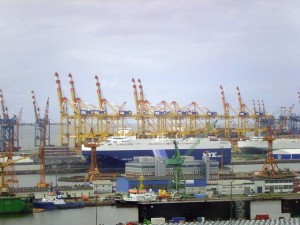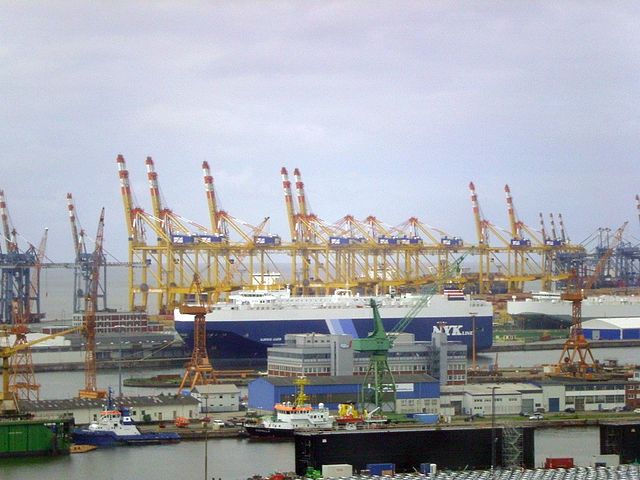 Carriers on the Asia-North Europe trade lanes are not likely to see a spike in demand in the third-quarter peak season and may even resort to more capacity cuts to arrest further volume and freight rate erosions, an unprecedented move for what is usually the main peak season of the year, predicts Drewry.
Carriers on the Asia-North Europe trade lanes are not likely to see a spike in demand in the third-quarter peak season and may even resort to more capacity cuts to arrest further volume and freight rate erosions, an unprecedented move for what is usually the main peak season of the year, predicts Drewry.
The maritime consultancy said headhaul volumes in the second quarter fell year-on-year by 5.8%, resulting in an overall cargo decline in the first six months of 2015 of 3.5%. By the end of June, the 12-month average rolling growth rate had fallen to 1.7%.
Drewry cites as major contributors to the decline the marked fall in demand for Asian goods by Russia and the weak euro. In the second quarter, traffic bound for Russia dropped 30% against the same period a year earlier.
At the same time, the weakness of the euro has caused imports into Germany, accounting for one fifth of the total Asia-North Europe trade, to retreat by 5.2% year-on-year between April and June, while Dutch and French inbound loads slipped back 3.2% and 2.9%, respectively.
“The malaise in the Russian market has deprived the trade of any meaningful peak season flow taking place in the third quarter,” said the report. “Admittedly, seasonal cargoes such as toys and Christmas decorations to North Europe as a whole have compensated for the loss of Russian traffic, but some forwarders have reported lower volumes of garments and electronic parts moving through the system compared to last year.”
Meanwhile, in the backhaul direction, after a negative result in the first three months of the year, second-quarter exports to Asia rose by 4.7% thanks largely to a weaker euro. For June, this allowed the imbalance ratio to reduce to 2 from about 2.4 a year earlier. A lower ratio benefits the shipping lines in terms of empty repositioning costs.
The carriers have reacted to the low demand on the Asia-Europe headhaul direction by instigating capacity cuts in the last four months, mainly with voided sailings. Lately too more permanent measures are being initiated, said Drewry. During the third quarter, the Ocean Three alliance has been running the FAL2 and FAL3 loops on an alternate fortnightly basis, effectively removing a whole loop from the trade. By early September, the alliance announced that from the end of the month one single loop, FAL23, would henceforth replace the two products.
The 2M alliance has also decided to suspend its AE9/Condor service as from September 14 due to weak market conditions, while the G6 members have been blanking sailings at a rate of four per month.
“The unprecedented decision to cut capacity during what has normally been regarded as the main peak season of the year did bring to a halt the rate slide that started in March but which, by June, had developed into a full-blown rate war among the carriers. By the end of the first half of this year, spot rates had slumped to historic lows of $350 per 40ft – a level which did not even cover the fuel cost element let alone any contribution to the slot cost or other operating expenses,” said Drewry.
September GRI takes hold but still disappoints
In related news, Freight Investor Services (FIS) reported that rates on the Asia-Northwest Europe trade jumped an additional US$172 last week to reach $763, having also increased a week earlier due to the planned September 1st general rate increase (GRI).
But FIS said that the increase “can be seen as extremely disappointing for carriers,” given their attempts to increase rates by around $1,000 TEU.
As a result carriers have begun making additional GRI announcements for September with several big names already showing their hand.
“The doubling of GRI’s for September might be seen as an act of desperation from carriers, with several lines announcing an additional increase of $500 teu come September 20th. However with the September 1st GRI failing to offer meaningful respite and well below the originally planned increase then it can be no surprise that carriers are trying again so soon,” said FIS.
In fact the average rate for August of $633 was a whopping 49% lower than that for the corresponding period a year earlier, and it looks likely that September will also end up being significantly lower than 2014, it added.
Photo: Tvabutzku1234





